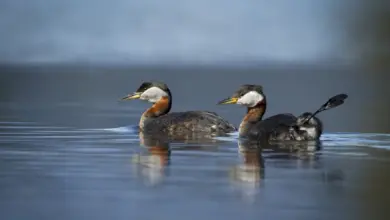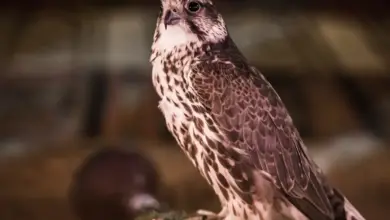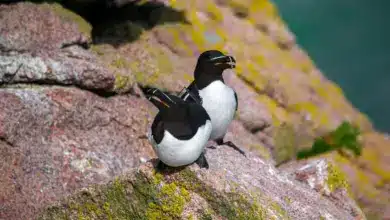The Crested Quetzals (Pharomachrus antisianus) – also known as D’Orbigny’s Trogons – are South American birds found in the moist montane forests of Bolivia, Colombia, Ecuador, Peru and Venezuela.
Their closest relatives are the Resplendent Quetzals (Pharomachrus mocinno) and the White-tipped Quetzals (Pharomachrus fulgidus), and some consider them conspecific (one and the same species).
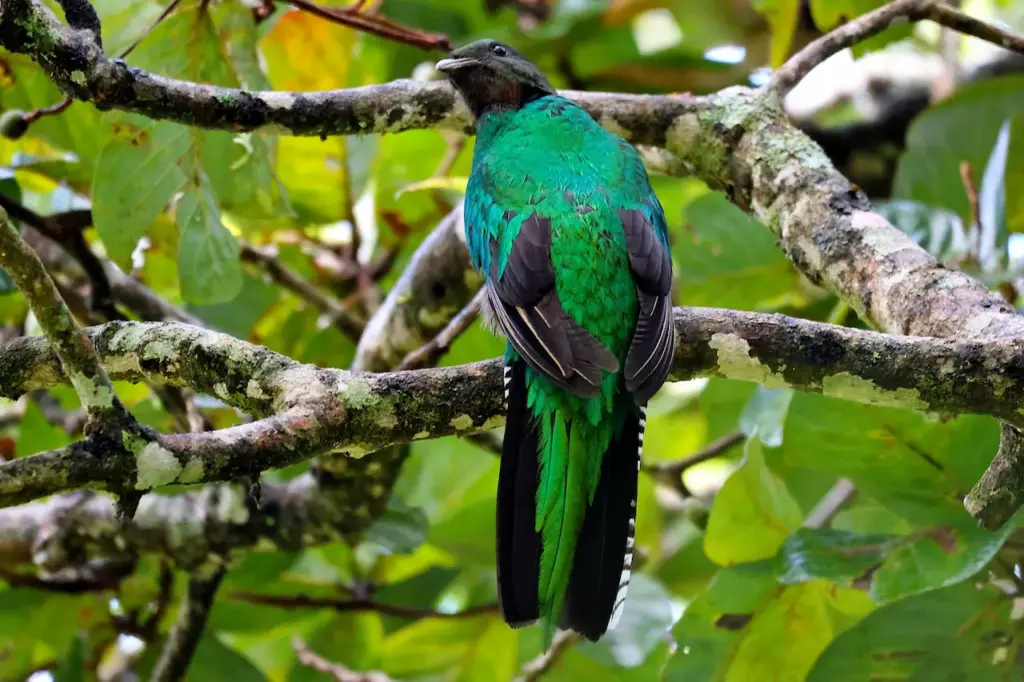
Distribution / Habitat
They occur naturally in the Andes – from northwestern Venezuela west to northern Colombia and south along the Andes mountain range to Ecuador, Peru and central Bolivia.
These solitary forest birds are found in humid forests and mature second-growth forests, at elevations from about 3,300 to 9,900 feet (1,000 to 3,000 meters).
The related Golden-headed Quetzals are typically found at higher elevations.
These poor flyers spend most of their time perching. When foraging, they have been observed to hover in front of their feeding plants for short periods plucking fruit from trees.
Crested Quetzals are sedentary (non-migratory).
Description
Size
On average, they measure 13.78 inches or 35 cm in length.
During the breeding season, the adult male grows a long tail that can exceed 30 inches or 76 cm in length.
Plumage Details / Adults
Adult males have a bright, glossy green plumage, except for a crimson red abdomen and vent area; violet wings and white undertail feathers. Males have short, bushy crests that range in color from green to turquoise. The feathers below the bill are turquoise.
On the onset of the breeding season, the breeding-age male grows an extremely long tail that ranges in color from green, blue and violet. It is believed that the length and quality of the tail is an important consideration for females when choosing a mate.
Females resemble the males, except their heads are a plain brown without the bushy crests; and only their lower bellies are red. The upper part of the belly is brown. There are some green feathers on the chest. The females’ undertail feathers are mostly dark brown with some white barring in the outer webbing.
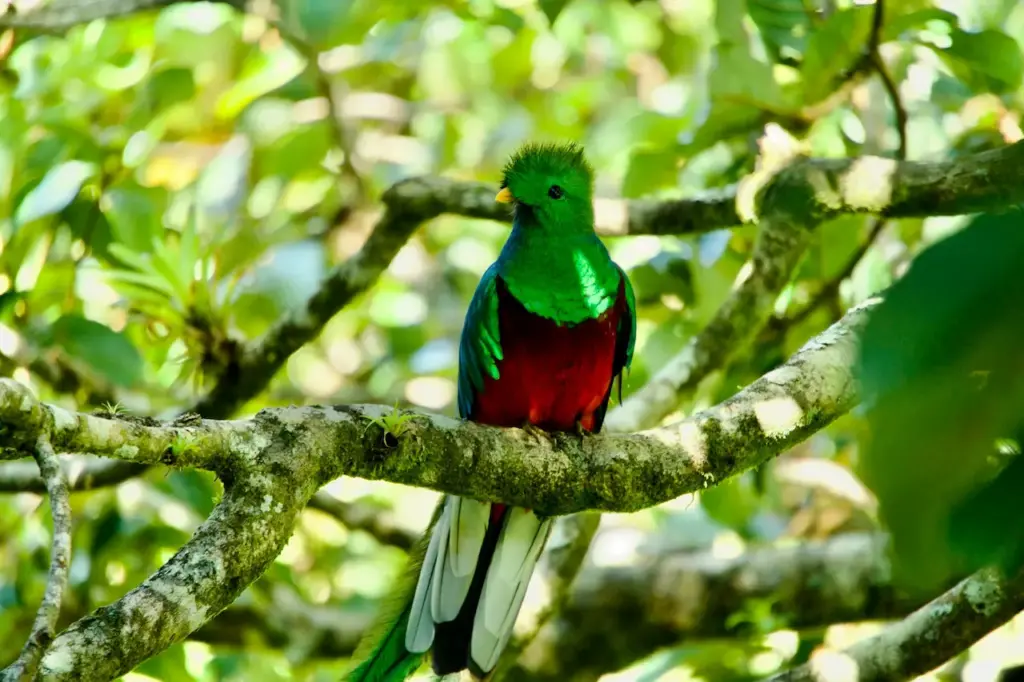
Other Physical Details
Legs / Feet:
- Olive-grey in color
- Four toes on each foot (two in front and two in back)
Beak:
- Fairly short, yet strong
- Finely serrated to facilitate tight grips on food items.
- Yellow in the male and black in the female
Juveniles
Immature birds have dark plumage with buffy markings throughout and tawny abdomens.
Similar Species
Male Crested Questals can be differentiated from the Golden-headed Quetzals by their all white undertail feathers.
Females have fewer green feathers no the chest than the female Golden-headed.
The white under tail feathers and the head crest distinguish Crested Quetzals from the other species of trogons.
Diet / Feeding
Crested Quetzals are known to feed on 41 species of fruits in the Lauraceae family. Additionally, they will take small amphibians, reptiles and insects.
Breeding / Nesting
Crested Quetzals are monogamous. Most breeding takes place between February through June. Up to two broods may be produced in each season.
These cavity nesters often take over old Woodpecker nests, or they may excavate holes in decaying trees. Nests are likely to be reused over several seasons.
The average clutch consists of 1 – 2 light-blue eggs that are incubated for about 18 days to hatching. The hatchlings emerge blind and helpless and are fed and protected by both parents. The eyes start to open after about one week.
Parents feed them insects, small amphibians and some fruits.
The chicks fledge the nest when they are about 3 – 4 weeks old. Within 3 to 4 weeks, they will search their own territories, but typically, they remain close to their parents for several years.
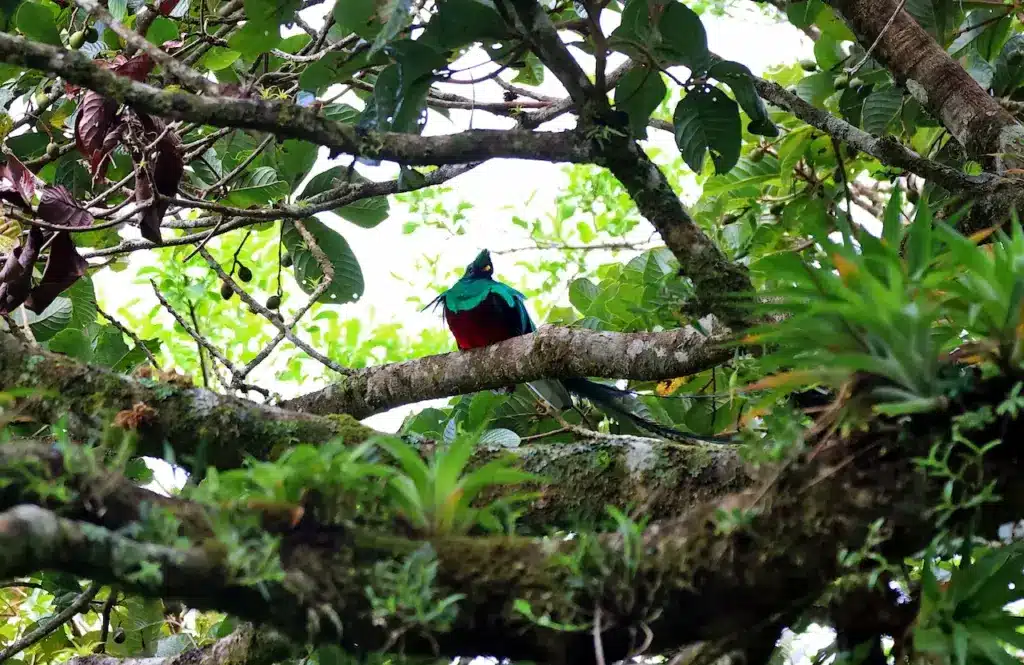
Calls / Vocalizations / Sounds / Video
Contact call: Rendered as “way-way-wayo” or a “whee-eoo”.
Alarm / Sentinel Calls: described as a short series of “ka” notes.
Alternate (Global) Names
Chinese: ????? … Czech: Kvesal prilbový, kvesal p?ílbový … Danish: Toppet Quetzal … Dutch: Kuifquetzal … Estonian: säbarketsal … Finnish: Töyhtöketsaali … French: Quetzal antisien … German: Kammtrogon … Italian: Quetzal crestato … Japanese: kammurikazarikinubanedori, kanmurikazarikinubanedori … Norwegian: Krøllketsal, Krøllquetzal … Polish: kwezal czubaty … Russian: ???????? ?????? … Slovak: kvesal strapatý … Spanish: Quetzal Crestado, Quetzal de Cola Blanca … Swedish: Tofsquetzal
Species Research by Sibylle Johnson
Please Note: The articles or images on this page are the sole property of the authors or photographers. Please contact them directly with respect to any copyright or licensing questions. Thank you.

